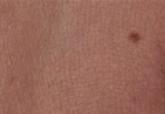Cosmetic Corner
Cosmetic Corner: Dermatologists Weigh in on Sunless Tanners
Leading dermatologists offered their recommendations on the top sunless tanners. See what they’re recommending to their patients and why.
Natasha K. Klimas, BS; Jake E. Turrentine, MD; Rachael L. Cayce, MD
From the University of Texas Southwestern Medical Center, Dallas.
The authors report no conflict of interest.
Correspondence: Rachael L. Cayce, MD, University of Texas Southwestern Medical Center, 5323 Harry Hines Blvd, Dallas, TX 75390 (rachael.cayce@utsouthwestern.edu).

Although Manne et al7 did not find an association between melanoma disease severity and sun-protective behavior in FDRs, the study design did not allow for assessment of potential counterphobic responses, which are most likely to develop in younger individuals who strongly identify with the family member whose disease was disabling or fatal. For example, the study included adult relatives (mean age, 46 years) of melanoma patients diagnosed in the preceding 4 years. Furthermore, fewer than 20% (108/545) of the patients had stage III or IV melanoma, and it was not known if melanoma patients communicated the diagnosis to their family members.7
A practice gap exists in FDRs of melanoma patients who are largely assumed to be practicing adequate, if not heightened, sun protection practices. Given that this group demonstrates poor sun protection practices, it is important to identify reasons for such behavior that may extend beyond what is currently known and may include counterphobia. Based on research performed in other medical conditions, the individuals most at risk for counterphobic responses are young children of patients diagnosed with a disabling or fatal condition, but whether in cases of melanoma counterphobia exists as a maladaptive response and whether such a response may occur in all close relatives, not just offspring, is unknown. Currently, the type of measure(s) that may mitigate poor risk factor modification due to counterphobia, including sun protection practices, is unknown. However, physician knowledge of counterphobic responses as a possibility in close relatives of melanoma patients may improve physician efforts to modify behavior in this unique, high-risk population.
The multimodal pathway of melanoma development suggests that individuals with an underlying genetic predisposition for melanoma who also neglect sun-protective measures are an especially high-risk group.12 As such, targeted education and screening of this patient population may be warranted (Table 1). Although it is incumbent on physicians to incorporate concerted screening, counseling, and focused interventions for newly diagnosed melanoma patients, taking similar measures to counsel and educate immediate relatives who may be at high risk for poor sun protection practices also is encouraged (Table 2).
We believe that recognition of counterphobic behavior is critical in the evaluation of FDRs of melanoma patients. Heightened awareness may bolster primary prevention efforts, especially in our patients with genetic diatheses toward melanoma development.
Leading dermatologists offered their recommendations on the top sunless tanners. See what they’re recommending to their patients and why.

Dr. Nanette Silverberg discusses melanoma screening in children.

There is substantial evidence supporting the use of cutaneous imaging in combination with standard total-body skin examinations for early...

The Mohs Appropriate Use Criteria app allows you to quickly determine when Mohs micrographic surgery is appropriate for your patients.

The British Journal of Dermatology recently described prognostic data regarding 1693 consecutive melanoma patients (American Joint...
